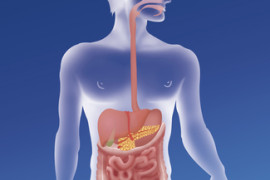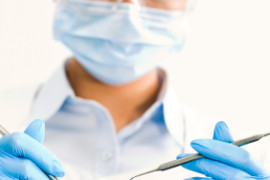Pancreatic cancer is one of the deadliest forms of cancer, killing 40,000 people every year in the United States alone. And according to research presented at the annual meeting of the American Society for Microbiology, it may have a connection with bacteria in the mouth.
The study, which analyzed the saliva of 131 individuals with and without disease of the pancreas, found that patients with pancreatic cancer had significantly higher levels of Leptotrichia and Campylobacter. Furthermore, those with pancreatic cancer were found to have lower levels of Streptococcus, Treponema and Veillonella.
“Our results suggest the presence of a consistently distinct microbial profile for pancreatic cancer,” says Pedro Torres, who presented the research. “We may be able to detect pancreatic cancer at its early stages by taking individuals’ saliva and looking at the ratios of these bacteria.”
Salivary diagnostic technology is increasingly being utilized as a bridge between medicine and dentistry. Saliva has repeatedly been shown to be an important indicator of general health; countless studies have used salivary diagnostics to connect periodontal pathogens with risk for health complications like heart disease, stroke, diabetes, and pre-term births.
Thanks to this technology, the dental team is now able to test for pathogens in patients’ saliva, often identifying at-risk patients who show no visual signs of periodontal disease. This paradigm shift is an important one in the movement towards prevention, wellness, and coordinated care between medical and dental professionals.
As research compounds, coordinated care teams may soon be able to assess and manage risk for diseases like pancreatic cancer early, potentially saving thousands of lives.



